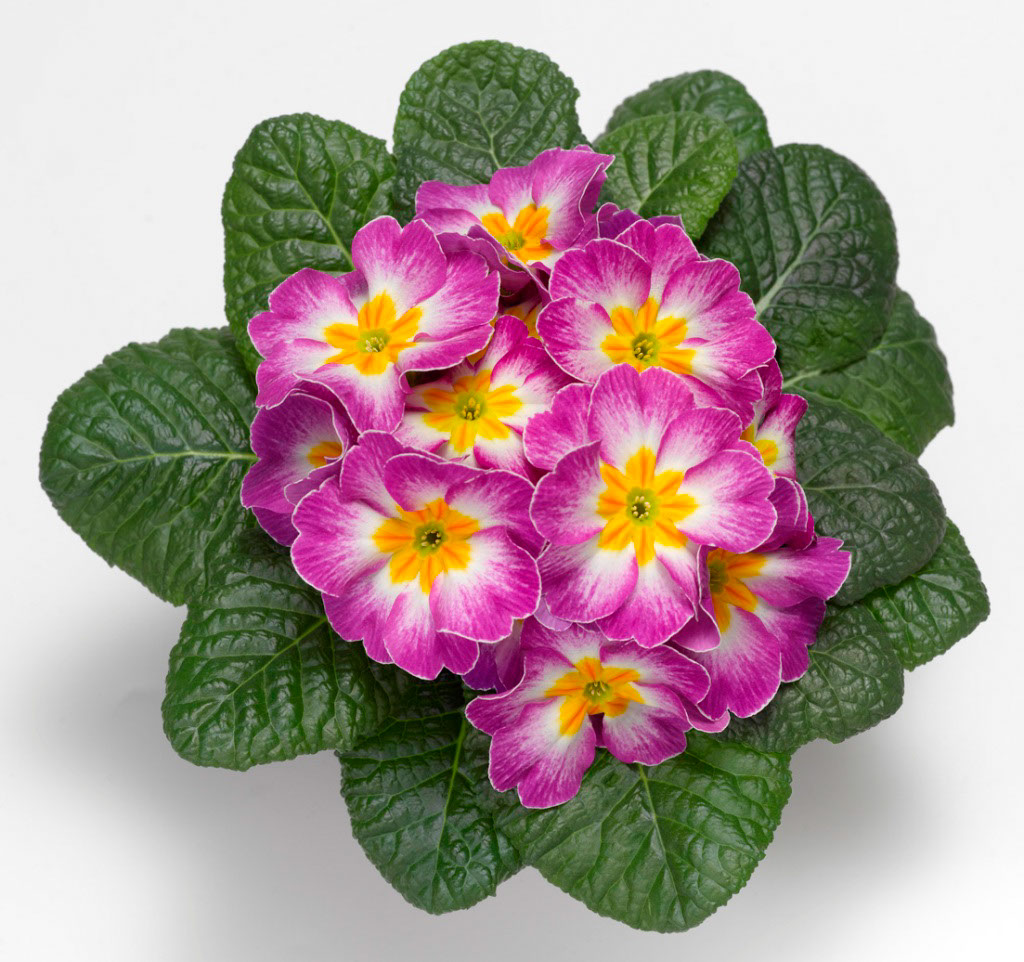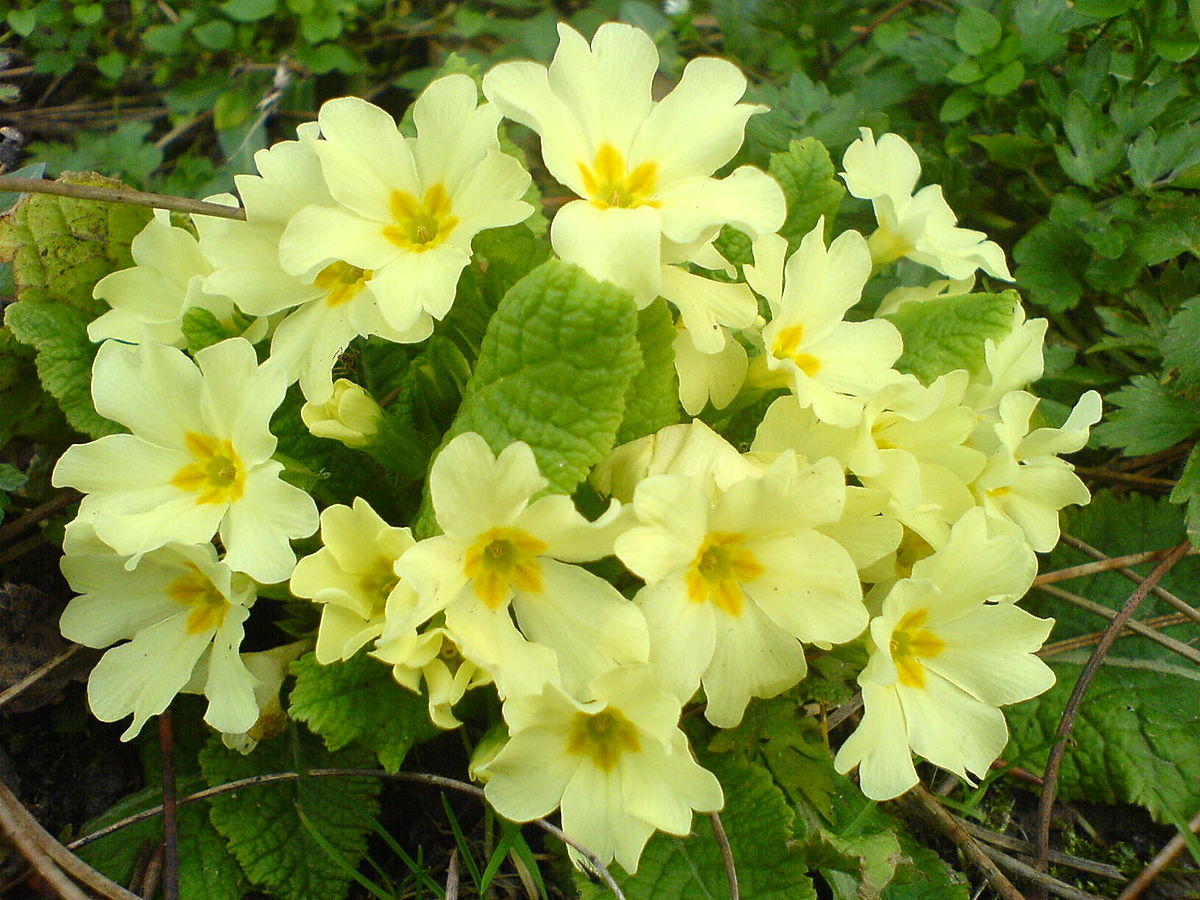There are hundreds of houseplant options. One of the most beloved species of flower growers is primrose: it has bright colors of various shades, blooms for a long time and is easy to care for. In this article, we will show you how to grow and care for this plant.
Content
Primrose: general information
Primrose has about 500 plant species of the primrose family. It got its name from the flowering time: flowers appear almost immediately after the snow melts. Wild primrose grows in the temperate zone: in Europe, Alps, Asia and North America. Indoor species can be grown anywhere in the world. They are distinguished by bright saturated colors: its flowers grow in inflorescences and have pink, red, yellow, white, blue and orange shades. The height of the bush does not exceed 25-30 cm, the leaves are distinguished by a pleasant green color.
Among all varieties, the following types are especially suitable for rooms:
 Common primrose or stemless: it has wrinkled leaves and large flowers of red, yellow and blue shades.
Common primrose or stemless: it has wrinkled leaves and large flowers of red, yellow and blue shades.- Primrose soft-leaved: its homeland is China. It is an annual cultivar that grows up to 50 cm in height. It has serrated leaves up to 20 cm long and has a pleasant aroma. The flowering period is in the second half of winter.
- Primula reverse conical: a perennial native to China, reaches half a meter in height. It has rounded drooping leaves and flowers of pink, red and blue. Some varieties are not poisonous and do not provoke allergies.
- Chinese primrose: grows up to 30 cm, leaves can reach 15 cm, flower diameter - 4 cm.The edges of the leaves are serrated, the flowers can be wavy. For annual flowering, it is required to organize a period of artificial dormancy once a year.
- Primula of Chusa: has a heart-shaped leaf shape with a characteristic white bloom, a pleasant smell and small yellowish flowers.
Basic rules of care
Primrose, home care which is quite easy and simple, still requires compliance with some rules.
- The plant requires a light room, but not filled with direct sunlight - windows in the west and north are well suited if there are no drafts there.
- The room should not be hot - for a primrose, the optimum temperature is 16-20 degrees. You can achieve abundant flowering with a low temperature - no more than 16 degrees. During flowering, the temperature should be lowered even lower - up to 12-14 degrees.
 It is good to use a mixture of equal parts of peat, sand and leaves as a soil, you can also add sod. Good drainage must be ensured, otherwise water will stagnate.
It is good to use a mixture of equal parts of peat, sand and leaves as a soil, you can also add sod. Good drainage must be ensured, otherwise water will stagnate.- Watering should be moderate as the soil dries up, and you should not pour water directly on the leaves, otherwise they will begin to rot. For the same reason, spraying is completely excluded, but you can not worry about the humidity of the air - the primrose can easily cope with any.
- It is required to feed the flower once every 2 weeks. It is important to remember that feeding can be done only after the flowers have formed, otherwise the plant will throw all its strength into the growth of leaves, and flowering will be delayed.
- As a care, it is recommended to regularly remove dry leaves and flowers, pluck dry stems.
Transplanting primrose
Home rimula requires regular replanting once a year at the end of flowering. It takes place in several stages:
- Having turned over the slides with primrose, the plant is carefully pulled out from there, trying not to damage the roots;
- The roots of primrose are carefully revised and damaged or diseased ones are removed to prevent infection;
- A small amount of prepared earth is poured into a large pot;
- Then the primrose itself is installed and covered with earth to the edges, slightly crushing;
- At the end, the ground is slightly crushed.
Distillation
During forcing, primroses are transplanted into more favorable conditions to accelerate their growth and development. it allows you to get flowers faster, but at the same time there is a depletion of roots and stems, and therefore the flowers will need a long - up to 2 years - recovery and rest. For distillation, garden primroses are used that are more than 2 years old.
- Before freezing, primroses are dug up and, together with the soil adhering to the roots, are transferred into separate containers.
- They are stored in dark rooms at a temperature of no more than 8 degrees, without watering: under warmer conditions, they will begin to grow actively, and flowering, on the contrary, will slow down and come much later.
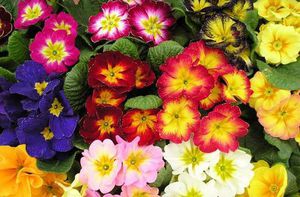 Then, at the end of January, the containers are transferred to a lighter room and the temperature is raised, but not more than +18 degrees, while they are slowly watered.
Then, at the end of January, the containers are transferred to a lighter room and the temperature is raised, but not more than +18 degrees, while they are slowly watered.- With this method, flowering begins by early spring. Forcing is often used to get the first flowers by March 8th.
- After flowering, the primrose should be transferred to a cool, bright place and watered regularly. After 1–3 years, it can be used again for forcing.
Reproduction
Growing room primrose can be done in three ways: by seeds, dividing and cuttings. From the moment of planting to flowering, at least six months pass.
Seeds
This is a familiar way that is usually resorted to for growing annual varieties. Depending on the selected type seeds are planted at different times: This is usually mid to late spring or early summer. For this method, a mixture of equal amounts of deciduous soil and sand is used. Seeds can be harvested every year from faded primroses or purchased.


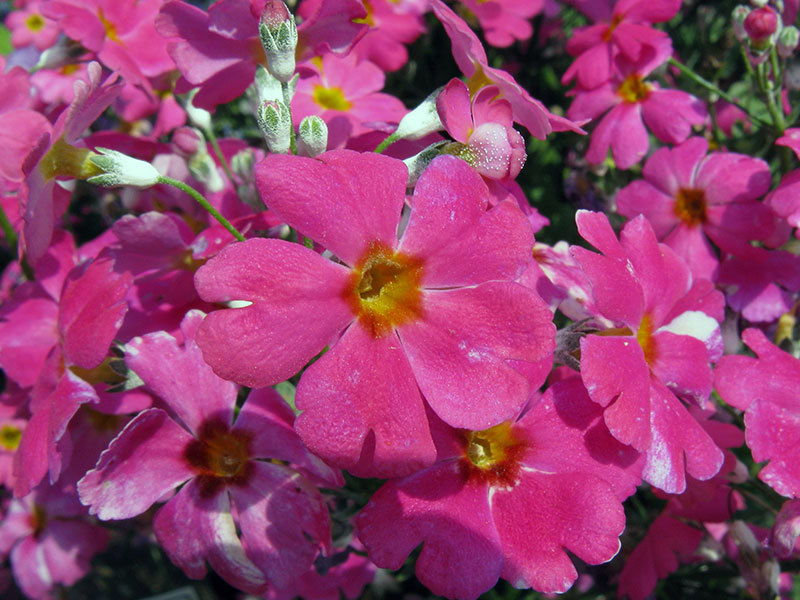
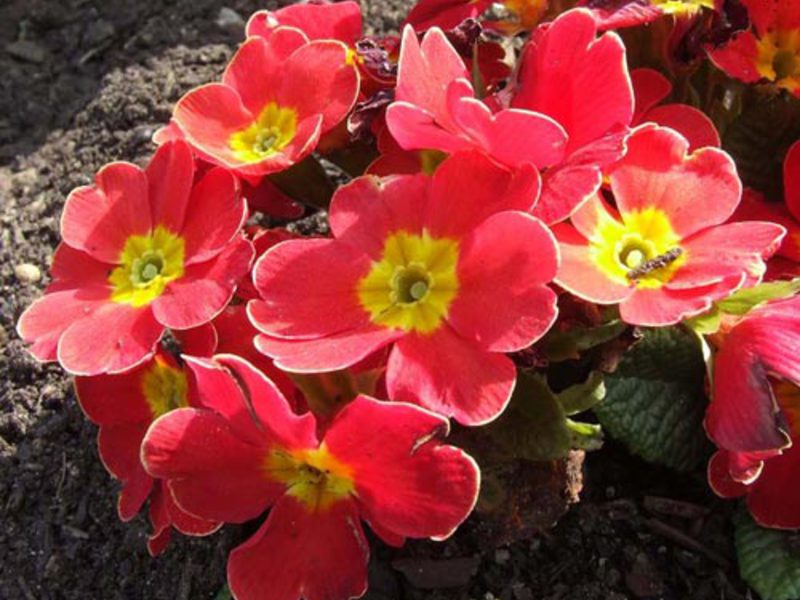
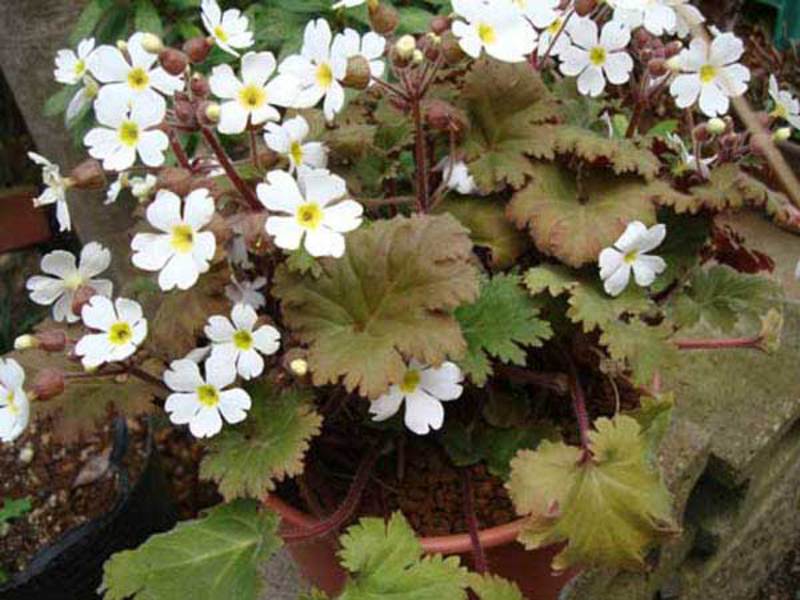

- The seeds are scattered over the surface, poured abundantly with water and covered with glass to create a greenhouse effect.
- After that, the pot is transferred to a cool and bright place for 1.5–2 weeks.
- When the first shoots appear, the glass can be removed, but it is best to keep the pot at a low temperature.
- Water the sprouts once a month, thin out and plant as they grow.
- After 3 months, the strongest are seated in separate small pots. When they grow up, they are transplanted into larger dishes.
Cuttings
Side branches can be used for this option. It is necessary prepare a small pot in advance and pour peat and a layer of sand about 2 cm thick into it.
 A stem with a leaf and a bud is cut off from a primrose. The sheet is cut in half, the cut line should be even, without notches.
A stem with a leaf and a bud is cut off from a primrose. The sheet is cut in half, the cut line should be even, without notches.- The petiole is planted in the ground to a depth of 1 cm at an angle and watered.
- The pot must be removed in a cool room, periodically watered.
- After about 3 months, when the petiole takes root and 3-4 leaves appear on it, it is transplanted into a larger pot. A mixture of 4 parts of deciduous soil, 2 parts of humus and 1 part of sand is used as soil.
By division
The method is used after full flowering of room primrose. Pre the plant is removed to a dark place and watered regularly. You can divide it when the stems begin to grow vigorously.
- The primrose is removed from the pot as during transplantation and the roots are examined.
- Then the bush is divided into 2-3 parts, each of which is planted in separate containers and watered.
- They are covered with transparent glass and placed in a cool room with abundant light. This should create a bathhouse effect.
- After a few days, when the plants take root and begin to grow gradually, they are transplanted into larger pots. Several transfers may be required if the original containers were not selected correctly.
- After each transplant, it is necessary to remove dry leaves, and also to feed the primrose every half a month with mineral fertilizers.
Disease symptoms
Like any plant, indoor primrose, home care behind which it is not only regular watering, it can get sick or be attacked by pests. It is easy to calculate by some external signs:
- If the leaves start to rot, the reason is high humidity or wetting;
 With yellowing and dryness, the problem may be too dry air, excess fertilizer or water;
With yellowing and dryness, the problem may be too dry air, excess fertilizer or water;- If the primrose does not bloom or quickly fades and drops flowers, it is worth checking the air temperature (it should not be higher than 16 degrees);
- Among insects, primrose often suffers from aphids, weevils and spider mites, and spotting is found among diseases. The latter manifests itself in the form of light gray spots on the leaves, which are then covered with bloom. To get rid of them, it is necessary to completely remove the infected leaves and sprinkle the primrose with a solution of Fundazol or Topsin.
Important
It must be remembered that primrose leaves are poisonous, and that primrose itself can cause irritation and allergies. Having finished caring for the flower, you must thoroughly wash your hands, work with it should be carried out with gloves. It is not recommended to put the plant in the nursery so that the baby does not pull the flower into his mouth and does not get poisoned.
Output
Primrose is unpretentious home flower that will not cause trouble for the owners... It takes root well in cold climates and will delight with beautiful flowers for a long time.
